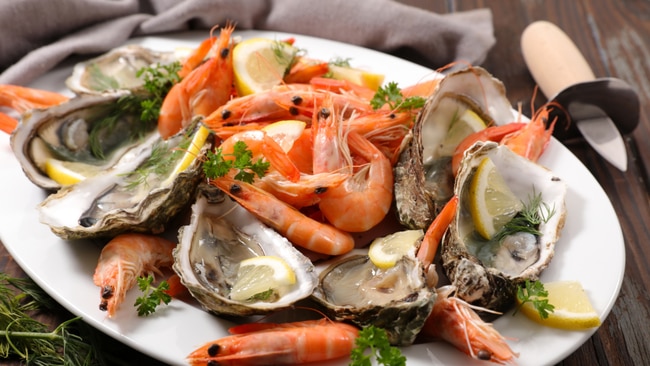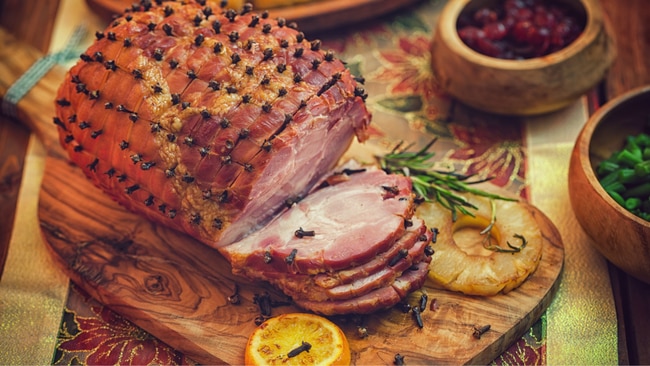This is how long can you safely eat Christmas leftovers
Don’t take any risks

Lifestyle
Don't miss out on the headlines from Lifestyle. Followed categories will be added to My News.
Not sure how many days your fridge of leftover ham and trifle can safely be enjoyed? Here’s how a nutritionist recommends preparing, storing and cooking your favourite festive dishes to avoid ringing in the new year with a bad case of food poisoning.
There are a few key components to the festive season, no matter how you and your family like to celebrate. It is a season filled with quality family time, well wishes, and gifting our loved ones.
It is also a time for some well-earned gluttony and indulgence, with decadent Christmas feasts set to be enjoyed over the next few days of celebration. Come Christmas day, Aussies will put out a lavish spread of Christmas meats, seafood, salads and desserts, catering for their household of in-laws, guests and family members.
But alongside the shopping, table-setting and hard-core food preparation, it is crucial we understand the safety risks associated with our favourite perishable dishes. With most of us set to enjoy our culinary efforts long after the festive day, here’s some advice from an expert on how to safely enjoy Christmas leftovers.

Like what you see? Sign up to our bodyandsoul.com.au newsletter for more stories like this.
According to nutritionist Jessica Scott-Young, there are three major things to consider when it comes to a dish’s longevity and safe consumption: whether the item is perishable or not, the timings and temperatures used during food prep, and how the food has been handled in the preparation and transportation process.
“We know that certain foods are more prone to bacterial pathogens and some foods are more prone to cross-contamination,” explains Scott-Young. “Christmas is a time for sharing and given the vast range of foods on offer, the risk of cross-contamination is high.”
The food preparation expert says that with the wide variety of dishes usually appearing on Christmas day (such as poultry, salads, seafood and cheeses) taking into account when each plate was first prepared (by you or a loved one) could make all the difference in avoiding a nasty run-in with bacterial pathogens.

Storing and serving seafood
No Aussie Christmas is complete without fresh, ice-cold seafood, a symbol of our summer celebrations. But before you venture into the sea of people lining up to get the freshest catch at your local fish market this weekend, make sure you follow the correct storage procedures.
Dead crustaceans should be consumed as soon as possible after purchase according to the Sydney Fish Market’s website guidelines, instructing customers to immediately refrigerate and cover their prawns with plastic wrap in the coldest part of the fridge.
With cross-contamination front of mind, the nutritionist also recommends being extra mindful when preparing your seafood and meat dishes, “Keep raw proteins separate, so don't marinate your salmon with your chicken wings.”

It all lies in the preparation and storage
As a rule of thumb, Scott-Young follows the advice of Food Standards Australia and New Zealand when it comes to keeping or discarding food, which is based on how long a dish has been kept out in temperatures higher than 5 degrees.
If a dish has been out on the table for less than two hours, it can safely be consumed or refrigerated again for later use. After the two-hour mark, however, certain food can start to rapidly decline, with experts recommending all dishes should be discarded after four hours.
With these guidelines in mind, Scott-Young advises us to stagger the consumption and presentation of our dishes on Christmas day, “Put cheese and nibbles out when people arrive, and remove them (within two hours) before the appetisers or main dishes are served,” she suggests.

Getting the most out of your leftovers
Before you stress about the sheer amount of food sitting in your fridge ahead of Christmas day, Scott-Young has a few handy tips to keep your kitchen risk-free.
After your family has cut their hot slices of ham or turkey, she recommends covering the dish once it has stopped steaming and putting it immediately back into the fridge, preventing bacterial spores from forming and thriving. Cooling food in smaller portions will also speed up the refrigeration process.
She also recommends getting your hands on a fridge thermometer (if your fridge doesn’t monitor the temperature itself) to ensure everything is operating below five degrees, “Remember, domestic fridges weren’t meant to store enough food to feed an army.”
Though freezing leftovers is a no-brainer for a rainy day (with labelled dates of course!), Scott-Young says it unfortunately isn’t safe for all food types, such as cooked or leftover seafood. “Don't refreeze anything that was originally frozen before being cooked,” she adds.
More Coverage
Originally published as This is how long can you safely eat Christmas leftovers





